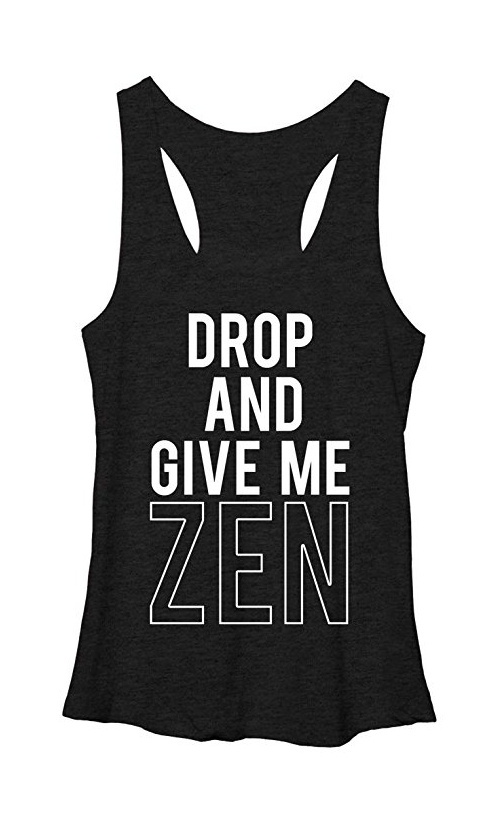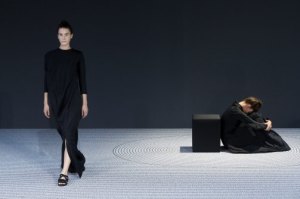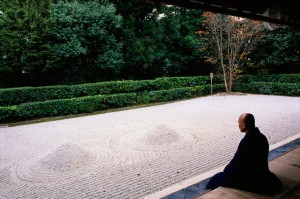
At an exercise class a couple of weeks ago I saw a woman wearing a shirt with this slogan, which inspired me to look it up online. This design comes from the apparel company Chin Up, but there are many more versions. Some posters with this slogan clarify it by adding a list of things to be dropped: regrets, resentments, doubts, worries, stress, fears. Some versions include an image of someone doing yoga (which is not actually the same thing as Zen):
Then there are the versions that insert some kind of Buddhist imagery, such as a silhouette of the meditating Buddha, a lotus flower, or the ensō (circle):
These “drop and give me Zen” products coalesce around wellness, the recent buzzword that encompasses physical, mental, and spiritual health. Most shirts with this slogan are marketed as workout gear, and of course the slogan itself plays off the familiar phrase “drop and give me ten,” which is usually associated with drill sergeants, coaches, and sadistic gym teachers. By changing “ten” to “Zen,” the slogan replaces push-ups or sit-ups with something vaguely spiritual and detached, but still focused. The common conflation of Zen and yoga reflects this vagueness about where these practices come from and what they involve. They’re both seen as Eastern in a nonspecific way that encompasses calmness, intentional breathing, and spirituality. The view that athletes adopt Zen-like concentration while competing also informs the slogan’s connection of Zen with athleticism.
While the array of products with this slogan includes mugs, posters, and magnets, by far the most common kind of consumer good is apparel. A shirt emblazoned with “drop and give me Zen” presents the wearer as someone who cares about wellness in all its forms, using Zen to confer an aura of spirituality on what would otherwise be standard workout gear. To use Chin Up’s line of slogan-sporting workout tops, “drop and give me Zen” is a different message than “shopping is my favorite cardio” or “run like zombies are chasing you.”
As with other Zen products, this shirt constitutes the ever-increasing inflation of Zen in American pop culture. Whereas Zen once had stronger ties to minimalist aesthetics and cosmopolitan sophistication (though still as a commodity), it is becoming a brand accessible to more and more Americans.






